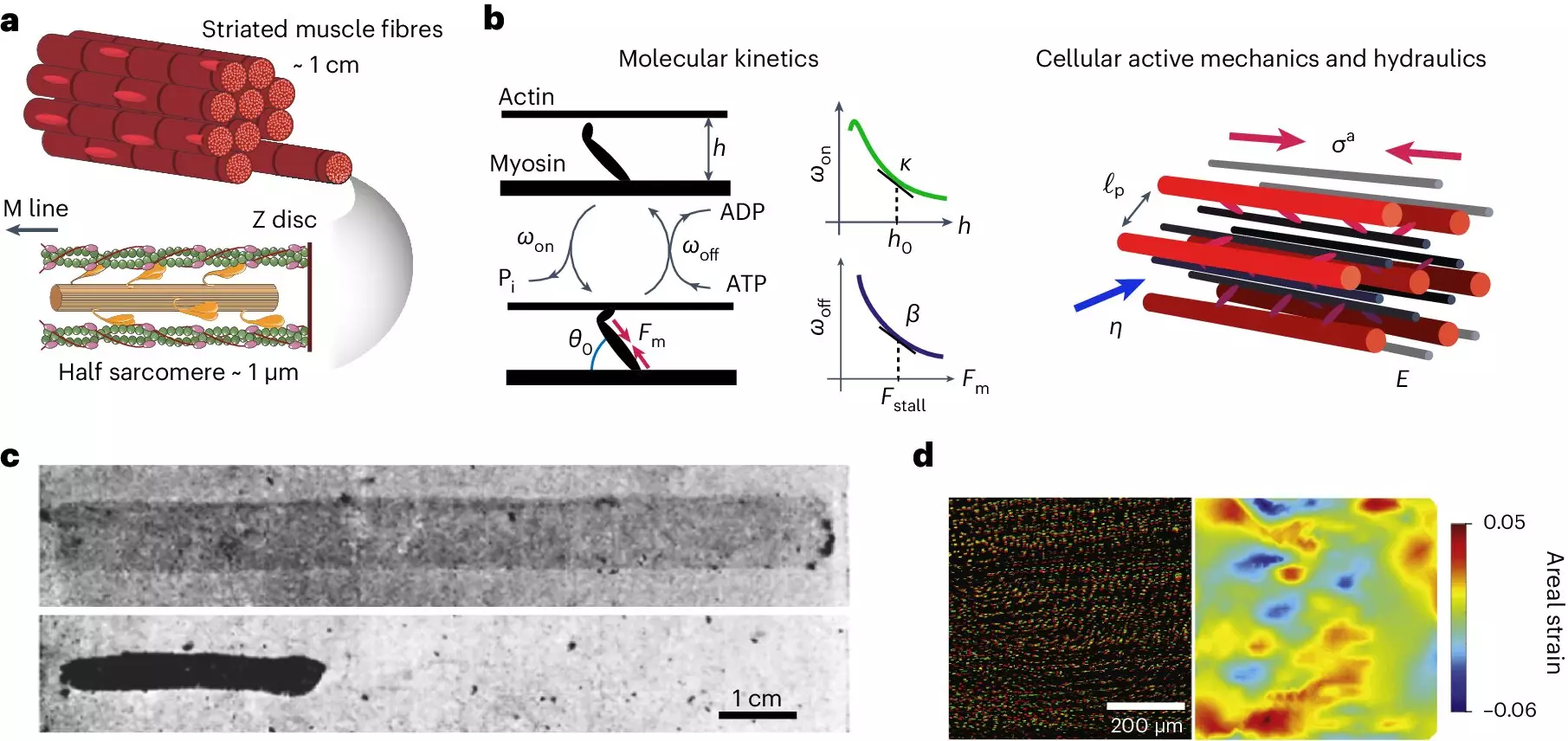Muscle fibers, the essential units of muscle tissue, have long captivated scientists’ attention due to their remarkable ability to contract and generate movement. A groundbreaking study from the University of Michigan dives deeper into the undercurrents of muscle functionality, revealing that the flow of water within muscle cells is pivotal in determining muscle contraction speed and efficiency. With muscles making up about 70% water, the study challenges long-held perceptions about muscle mechanics, urging a shift away from a purely molecular focus toward a more holistic view that considers the fluid dynamics within these tissues.
Fluid Mechanics and Muscle Contraction
The collaborative research effort, led by U-M physicist Suraj Shankar and Harvard’s L. Mahadevan, introduces a pioneering theoretical model that elucidates the significant role of water in muscle performance. The study concludes that fluid movement inside muscle fibers can significantly influence contraction velocities. This insight opens new avenues for understanding the mechanics of musculature across various species, encompassing mammals, birds, reptiles, and insects.
Many past studies adhered to the notion that muscle action could be summed up at the molecular level, investigating proteins and chemical reactions primarily. However, the integrated approach presented by Shankar and Mahadevan painted a different picture: that muscle fibers behave more like active sponges. This perspective highlights the necessity to consider the arrangement of proteins, cell structures, and surrounding fluids rather than merely the molecular interactions that occur within.
Odd Elasticity: A New Perspective on Muscle Mechanics
One of the most riveting revelations from this research is the discovery of a phenomenon termed “odd elasticity.” This term describes how muscle fibers contract not only along their length but also bulge outwards in the perpendicular direction. This behavior contrasts with classic elastic materials, such as rubber bands, which store and release energy uniformly when deformed. Muscles, through their unique structure, do not adhere to this principle, exhibiting an intrinsic capacity to harness energy differently as they deform.
As muscles contract, they do not just shorten; they simultaneously create new forms and shifts in water distribution within their structure. This dual action allows muscles to tap into energy generation in a way that defies standard physics conventions, revealing that muscle tissue operates as a ‘soft engine.’ This perspective shifts the understanding of muscular performance, suggesting that muscles can actively store and release energy through complex movements rather than relying solely on chemical reactions.
The Role of Neural Control and Fast Movements
The researchers also examined the nuanced roles of neural control in muscle contraction speeds. In high-frequency movements, such as those seen in some insects, the rapid contraction rates exceed the limitations of neural control, which often substitutes fluid dynamics for instructions relayed by the nervous system. Muscle contractions in smaller organisms, like mosquitoes, occur at phenomenal rates, indicating that fluid flow plays a crucial role in these rapid motions.
This indicates that muscle mechanics are more intricate and nuanced than previously thought, with fluid dynamics often playing buffer roles where neural firing speeds lag behind required contraction rates. For example, certain muscles that produce sounds, such as the rattlesnake’s tail, work under a model reliant more on molecular properties than on fluid dynamics, demonstrating the variability in how different muscles operate across species.
Implications for Future Research
Shankar and Mahadevan’s insights compel a reevaluation of muscle physiology. By suggesting a shift from examining muscles merely as aggregates of molecules to understanding them as hierarchically structured systems bathed in fluid, they challenge researchers to rethink muscle performance metrics.
These findings offer fertile ground for future research opportunities that could redefine how athletes train, how injuries are treated, and how synthetic muscles could be developed for robotics and biomedicine. Whether for designing better performance-enhancing techniques for elite athletes or innovating muscle-like materials for artificial limbs, the implications are significant and broad.
The urgency to pursue experimental tests to assess the theoretical predictions outlined in the study is undeniable. The groundwork laid by this research not only prompts a fresh angle on muscle contraction but also has critical implications on bioengineering, rehabilitation, and sports sciences, propelling the scientific community to reimagine our understanding of the muscle’s functional repertoire. In essence, the dynamics of water within muscle fibers reveal a complex and active landscape, bridging fluid mechanics and muscular performance into a harmonious symphony of biological wonder.

